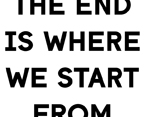- Exhibition program
- The End Is Where We Start From
- Artist
- Mireia c. Saladrigues
- Dates
- —
- Curated by
- Karin Campbell
In 1737, the Salon became a fixture in Parisian cultural life. Staged every other year, this free, public exhibition permanently changed both art consumption and production in the French capital. In 1985 art historian Thomas Crow argued that the birth of the Salon also meant the rise of a totally new art public, one that was heterogeneous, opinionated, and unpredictable. As the Salon increased in popularity, the art world noticed a gap between what exhibitions were intended to represent and how they played out in practice, a tension that arguably remains present today. Crow explains:
[The Salon] was collective in character, yet the experience it was meant to foster was an intimate and private one. In the modern public exhibition, starting with the Salon, the audience is assumed to share in some community of interest, but what significant commonality may actually exist has been a far more elusive question.[1]
One reason this “commonality” is so difficult to pinpoint is that both audience members and institutions (the Salon in the 18th century, the museum now) are responsible for shaping an art public’s shared identity. Upon attending an exhibition, individuals knowingly join a group of people defined by its interest in art. For its part, the hosting institution physically unites the exhibition community and sets standards that dictate which behaviors are acceptable, and which are reprehensible. In the Salon, these standards, born of the notion that viewing art was a privileged act, served to ease the minds of wealthy patrons who were alarmed by unprecedented social engagement among people from different classes.
The Salon’s legacy of normalized codes of conduct has remained strong in contemporary museum practice, despite attempts by many artists starting in the mid-20th century to interrupt or even end formal, rule-based behavior within exhibitions. In reacting against the staid museum “white cube,” artists have highlighted an issue with which many Salon visitors would likely have identified: that within museums, people are forced outside of their comfort zones because they are expected to adhere to certain norms. By inviting audiences into their creative processes, artists can draw upon humans’ impulse to act as social beings and communicate when they congregate for a shared purpose.
Her Museumlooks at how an exhibition context instigates certain types of behavior and how they can be confused by the unpredictable nature of social interaction. The project begins with a single object – a book written by an individual who has spent much of her adult life watching other people engage with art. Yet this book is only part of the story. The rest you must discover on your own.



